Kosmos Games
About
Welcome to our stand! We will be showing the best of the new games from Kosmos and Devir.
We will be officially launching Nunatak and Dragonkeepers here in the UK. Devir will be demoing Salton Sea, Cities, White Castle and Sand.
We can't wait to show you these cracking games. We will also ensure that all of our latest games, including the amazing The White Castle, will be available for you to play in the UKGE library.
We look forward to welcoming you to stand 1-602!
Games
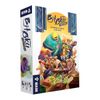
Bitoku Expansion: Resutoran
Bitoku Resutoran: return to the ancient forest with three new flavors
By popular demand, three new expansion modules for Bitoku, the successful game from designer Germán P. Millánand, illustrated by Edu Valls, which multiply the possibilities of the base game.
More information about the Resutoran
Diners, welcome! In this humble restaurant, the most delicious delicacies are cooked, and the spirits gather to tell their stories while drinking sake and playing dice. We have prepared a tasting menu with which you will be able to enjoy the best flavours of the ancestral forest.
Just as if it were a restaurant menu, Bitoku Resutoran offers us three modules that players can consume as they wish: in parts, adding one or two to the base game, as if it were a delicious appetizer, or they can use them all, enjoying a feast.

The components
What do the new Resutoran modules consist of?
On one hand, we find the module called Conversations, which includes 6 new yōkai cards and 5 new iwakura rock tiles, which expand the components available to players in each game. In the case of the new cards, a previously unheard-of concept also appears: yōkai alliances, which combine two types of yōkai on the same card at the same time and perform hybrid actions that did not exist before.
The second menu that Bitoku Resutoran brings us is called Kodamas, and it adds 15 new lake treasure tiles (they can also be enjoyed in solo mode!). These tiles are divided into three groups: golden lakes, whitelakes, and black lakes. The new treasure tiles are combined with those from the base game to create all kinds of effects, since in addition to earning points at the end of the game they also grant points in the ascension phase or when they reach a certain position with their kodamas. Not only are these new components, but they add a small strategic twist in managing the race to be first on the lakes.
The third and last Resutoran module is the most spectacular: the festival. Let the fireworks begin! This expansion includes a deck of 65 cards and a small board to place them on. Throughout the game, players will obtain festival cards, which contain very powerful actions that can be executed when indicated by the text, as long as certain requirements are met. Inside the deck there are brawl cards (marked in red) that cause direct interaction between the players. It’s up to you whether or not to use them in a game… You decide if you want to embrace the chaos or prefer a more relaxed session!



The match
In Bitoku, the players use cards and dice to carry out actions in different locations on a large central board, which represents the ancestral forest. With them they can build buildings, seek the favor of new yōkai to add to their hand, guide pilgrims on their path to enlightenment or help the mitama, the lost souls who seek redemption through chinkon dragonflies.

Cities
You've been tasked by the city council to put together a plan to transform a whole neighborhood in the city. You have the opportunity to build new housing, office buildings, parks, and leisure areas near the waterfront. It is in your hands to make the city a better place.
Cities is a city-building game in which you draft the best projects and arrange them in your own playing area. Designed by Steve Finn and Phil Walker Harding and illustrated by Jorge Tabanera, it allows games for groups of 2 to 4 players, ages 10 and up, lasting about 40 minutes. With action and resource draft mechanisms, it will give you the opportunity to visit the cities of Sydney, London, New York, Barcelona, Rio de Janeiro, Lisbon, Mexico City, and Buenos Aires. Can you design the most magnificent neighborhood?
The game is played over eight rounds (or four rounds in a two-player game). Each round, players use their workers to collect 1 scoring card, 1 city tile, 1-2 feature tiles, and 2-4 building pieces. City tiles are made up of park spaces, water spaces, and building spaces. Building pieces are placed on building spaces of the same color to form buildings, which can be 1-4 stories high. Whenever a player fulfills an achievement, they place one of their discs on the achievement board. At the end of the game, players add up the points they have gained from all of their scoring cards and achievements.
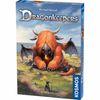
Dragonkeepers
It goes without saying you have a few clever tricks up your sleeve in order to manipulate the book in your favour.
The best dragonkeeper wins this fantastic contest! A fantastic family game with art and design by Michael Menzel.
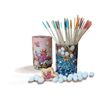
Go Cuckoo
New edition of Go Cuckoo!, a best selling game that won the As d’Or “Best Children’s Game” at the Cannes Game Festival 2017.
Created by Viktor Batista and Josep M. Allue (The Colour Monster), Go Cuckoo! is a party game for kids as young as 4 years old but that rowdy adults will love as well.
A lovely game with the gorgeous components and shelf presence we have come to expect from Devir, at a very attractive price point.

Inside Job
The Mostly Cooperative Trick-Taking Game
You are a group of secret agents and must work together to complete your missions. But beware! An insider is hiding amongst you, sabotaging you at every turn and collecting secret information along the way. In this (mostly) cooperative trick-taking card game, you slip into undercover roles. Who is acting suspiciously? Who can you trust? Complete a mission with each trick and find out who is the insider.
- A (mostly) cooperative trick-taking card game for groups of three to five players.
- Each player assumes the role of secret agent tasked with various missions, except there’s one insider hiding amongst you, ready to thwart your efforts!
- Can you complete your missions, despite the secret saboteur, or will the insider get the best of you all?
- Fun, entertaining party game with high replayability and variants to add complexity.
- Great for fans of social deduction, role-playing, or mystery games.
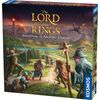
Lord of the Rings: Adventure to Mount Doom
Frodo’s journey to Mount Doom is fraught with peril.
Luckily, his loyal friends protect him on his way. With a clever choice of dice, players work together to move the figures across the gameboard.
In this cooperative fantasy board game, players will win — or lose — together.


Monster 12
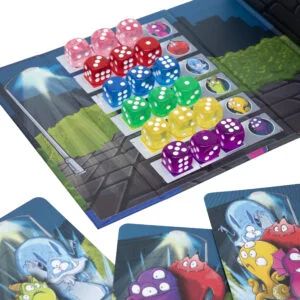

My Gold Mine
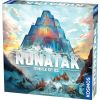
Nunatak
In the three-dimensional construction game Nunatak: Temple of Ice, you build a step pyramid together in a mountain of ice — but this game isn't co-operative, so watch your step! (A "nunatak", by the way, is a hill or mountain completely surrounded by glacial ice.)
For each pillar stone placed, you receive cards with different values that will affect your score in the end. For every four pillars built in a square, a new level of the monument opens up, with the temple of ice growing step by step. Who can place their stones most wisely and rise to the icy challenge?

Salton Sea
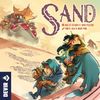
Sand
People refer to this vast place only as the desert since no one remembers what was here before. The golden age of human beings has long passed. Now there is only sand, and the only hope is in the humidity.
Travelers cross the desert that stretches from the slopes of the Akaishi Mountains to the cliffs of Seaclaw. Half-ruined ancient cities are home to the last human communities struggling to survive by foraging for what little green remains standing. These desert travelers transport goods on the backs of their caterpillars. Although their only goal is to make as much money as they can, at the same time and in a more or less deliberate way, they are helping to bring life back to the desert by carrying small plants from the artificial greenhouses of the cities to the most remote corners of this ocean of sand.

The White Castle
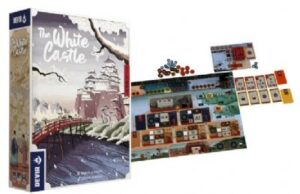
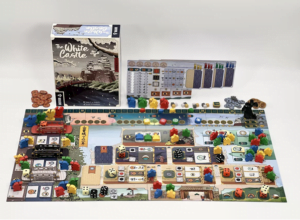

Yokai Sketch
Children who go into the forest may come across some yokai, that is, supernatural creatures and phenomena. Moved by boundless curiosity, the little ones draw these spirits in their notebooks to understand their nature and learn from them.
With a set-collection core mechanism, the goal of Yokai Sketch is to score more yokai points than the other player by completing sketches of the elusive forest spirits. The game consists of two decks of cards: in one are four types of yokai, each associated with an element (water, fire, earth, and wind) and a numerical value that corresponds to victory points, and in the other, sketches made by humans, two of the four elements, and possibly a special ability.
At the start of the game, the yokai cards are stacked in four decks (one for each element) and three sketch cards are dealt face down to players. On their turn, players draw a new sketch card and slide one of their four cards under one of the four decks in the center of the table so that it reveals the element associated with that yokai. If by doing this the yokai reaches or exceeds the number of sketches needed to draw it (adding the sketches on both sides of the card), the player who has accumulated the most sketches on their side of the table takes it.
The winner's sketch cards will be placed in the discard pile, and the other player's will stay where they are as they will be used for the next yokai card of that type. If there is a tie in the number of sketches on both sides of the card, the yokai is frightened and lost. In this case, neither player manages to finish the drawing and all the sketch cards on both sides of that yokai pile are discarded. Sketch cards can also include powers: calling the yokai or distracting it to move cards. The game ends when one or more yokai decks are empty.

